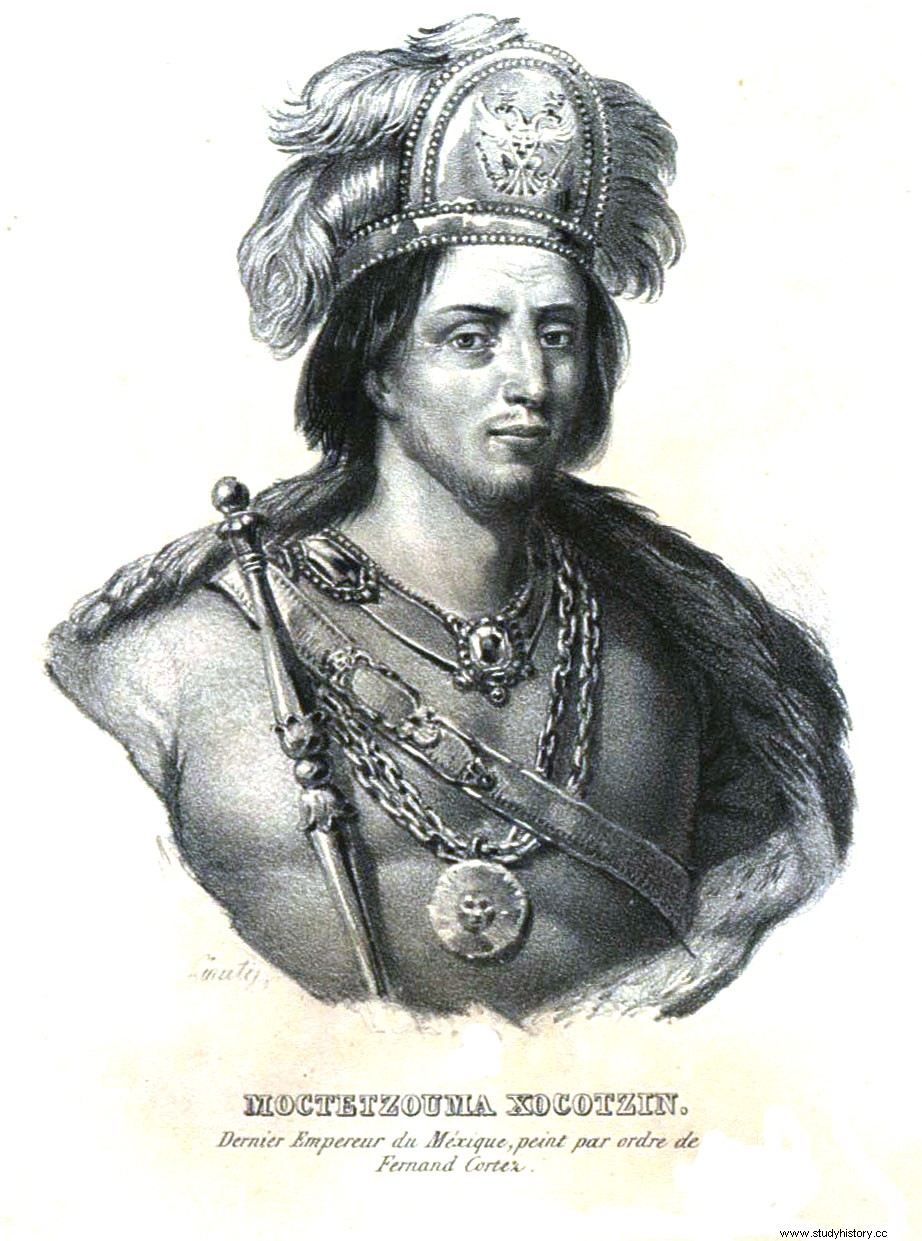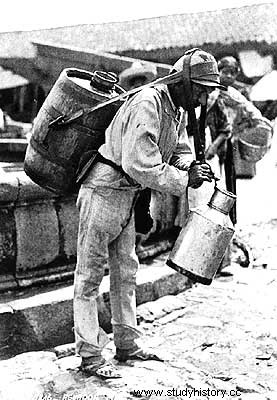In Mexico it is celebrated September like the national month, the quintessential month dedicated to the Mexican homeland in which events relevant to its history took place, some glorious and others not so much, that changed the destiny not only of Mexico but also of the United States and Spain… « the War of Independence, the United States invasion of Mexico and the triumph over an attempted Spanish reconquest «.
But history, as in all parts of the world, either because it is not interesting, because of prejudice or tendentious pens, causes certain characters to be buried in oblivion... and Mexico was not going to be the exception. These are some of those characters that have been forgotten.
Count Claudio Linati
This Italian genius only lived in Mexico for two years, from 1825 to 1826, but he changed the history of Mexico. Together with Fiorenzo Galli and the Cuban poet José María de Heredia founded the newspaper “El Iris ”. In addition, with the help of the lithographers José Gracida and the Italians Carlo Satanino and Luigi Brotti from Scagnello , he created the first lithograph of independent Mexico, for better or for worse . To him we owe the image of the lazy Mexican under a nopal, the tortilla woman (makes or sells tortillas), the man carrying loads of wood on his back, the dragon officer (lithograph of the Mexican soldier from 1825), the friar Camilo, the elegant lady and the images of the fathers of the Mexican homeland:Hidalgo , Morelos and Moctezuma .
On February 4, 1826, the Iris newspaper would publish the first Mexican lithography. Unfortunately, the newspaper was soon described by broad social groups as a subversive, critical and radical publication. Faced with this situation, Claudio Linati decided to return to Belgium, where he had come from when the idea of investing in Mexico arose. The newspaper only published 40 numbers and the machinery passed into the hands of the engineer Carlos Serrano and the Academy of San Carlos. When he returned to Belgium, he published 48 lithographs on the newly born Mexican Republic titled " Costumes Civils Militaires et Réligieux de Mexique dessinés d' après Nature » that captured the essence of the Mexican archetype that still endures before the world. Here is the lithograph he made of Moctezuma, the first in history.

Moctezuma Lithograph
In 1832 he returned to Mexico but only to die of yellow fever in Tampico, Tamaulipas, where three years earlier the Spanish trying to reconquer Mexico had also suffered from yellow fever.
Manuel de la Peña y Peña
In Mexico, perhaps one of the most hated characters is Antonio López de Santa Ana , which has always had the reputation of having sold half the country to the United States after the US invasion, specifically more than 2,400,000 square kilometers (the current California, Arizona, Nevada and New Mexico; Texas did not enter the sale because it was already independent before the invasion).
But few know or perhaps history has forgotten that the one who really sold said territory was Manuel de la Peña , president of Mexico in 1848 -Santa Ana had resigned months before the presidency-. Regarding this sale, signed in the Guadalupe-Hidalgo Treaty …
Whoever wants to describe the Treaty of Guadalupe as dishonorable due to the extension of the ceded territory will never solve how an unfortunate war can end […] The territories that have been ceded by the Treaty are not lost for the sum of fifteen million pesos, but to recover our ports, for the definitive cessation of all kinds of evils, of all kinds of horrors, to comfort a multitude of families […] We already feel too much the social disorganization, the insecurity of the towns and roads, the paralysis of all branches of public wealth and general misery.
It was made to believe that the Treaty was signed to end the war, the reality is that in this way they managed not to lose more territories, the United States wanted the Isthmus of Tehuantepec, Baja California and Sonora. American colonial expansionism was made clear in the words of President Thomas Jefferson in 1786…
Our confederation must be considered as a nest from which all America, North and South, is to be populated. Thus, let us be careful, in the interest of this great continent, not to expel the Spanish, because those countries could not be in better hands. My fear is that Spain is too weak to maintain her rule over them until our population has advanced enough to gain dominance inch by inch.
The water carrier
He is one of the most picturesque characters in Mexico in the 18th and 19th centuries, a character who, with a very particular clothing - almost always indigenous - with water containers, went from one side to the other of the cities and towns of Mexico to clean fountains, mitigate fires and bring water to homes. The boyfriends used him as a postman to entrust him with love letters...

According to Jules Leclercq …
he is a character that I have not seen anywhere else, since in each Mexican city there are different […] he wears white cloth pants and velvet or leather chaps that do not go down below the knee. Over his shirt he wears a leather jacket provided behind a cushion designed to hold the chochocol, a red clay pitcher that contains the merchandise of the water carrier. He is covered with a leather cap and, with the help of a strap that passes through his forehead, he supports the bulky pitcher that hangs on his back, while another strap adapted to the nape of his neck supports the smaller pitcher that hangs on his stomach.; thus the two pitchers are balanced. I imagine that the water carrier carried his merchandise in the same way in Moctezuma's time. He is one of those characters that persist through the centuries and evoke an ancient civilization.
The water carrier had a lot of confidence in people; to collect, he would leave a boxwood flower seed in the house where he left water as a token of debt, so that later, a week later, he would count them and know the account in that house. The advancement of technology left him in oblivion… and without a job.
Peter of Ampudia
It may not be as relevant, but it is a sample of what some Mexican soldiers and generals were during the invasion of the United States. Peter of Ampudia led the defense of the city of Monterrey, a battle that began on September 21, 1846, one day after the city celebrated 250 years of its foundation and that in the last month it had had four governors due to multiple political problems -just reflection of how Mexico was at that time-.
Pedro de Ampudia handed over the city to the US Army led by General Zachary Taylor -who would later become the 12th president of the United States-. When the US army entered Monterrey, they found a trench in every house, there were forts all over the city and the will of its people to continue fighting… without the soldiers, Monterrey could only hold out for four days. Pedro de Ampudia later said that he did it to maintain the dignity of his men, as they left the city for neighboring Saltillo without many casualties. In 1848, the Americans left Monterrey when Mexico ceded the current territories of the American southeast to them.
There were many battles in that war that were lost in this way, including some by the charismatic General Santa Ana. In some battles it seemed as if the generals wanted to be defeated, something that was proven later:many Mexican generals wanted to belong to the United States and the aid between States left much to be desired due to the centralism of the government.
Collaboration of Edmundo Pérez (a Mexican from Monterrey)
Sources:A Perfect Gibraltar:The battle for Monterrey – Christopher Dishman, Notes of the Mexican War, 1846-47-48 – J. Jacob Oswandel
